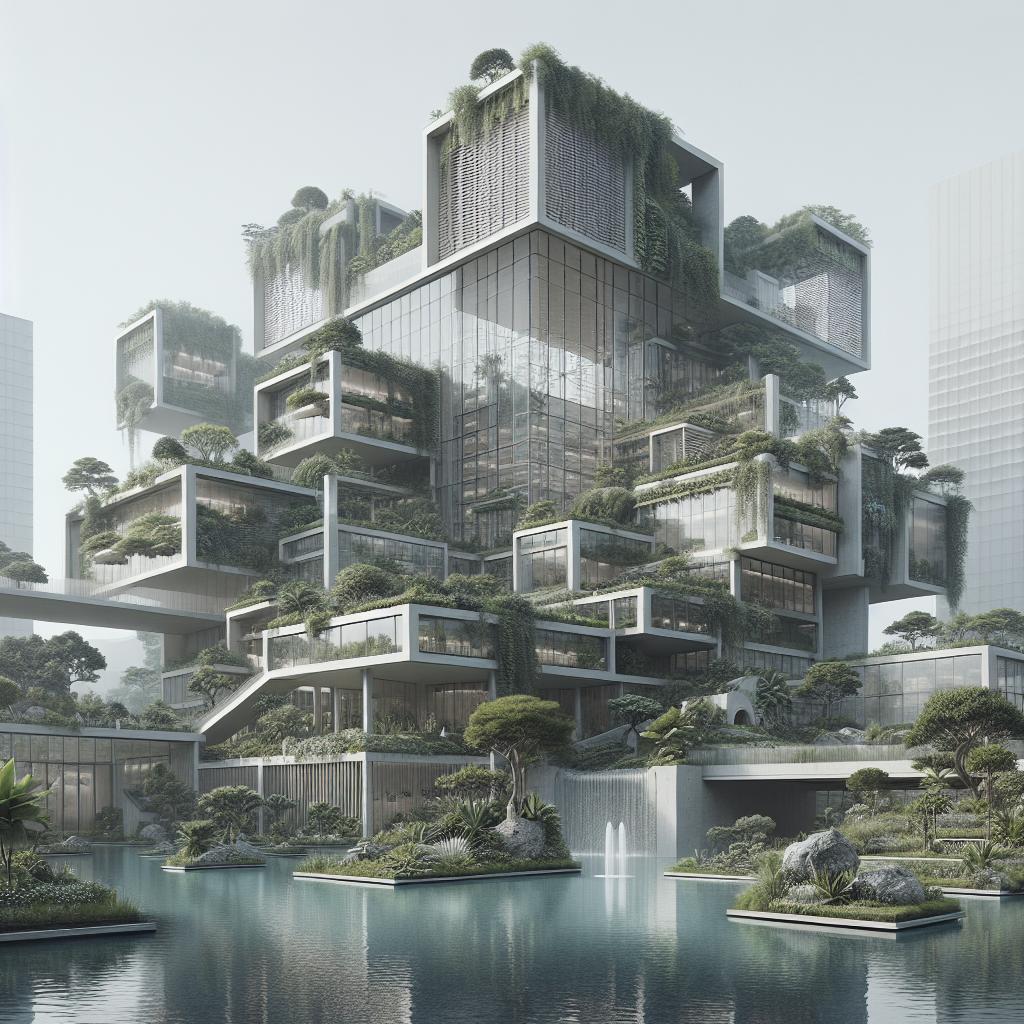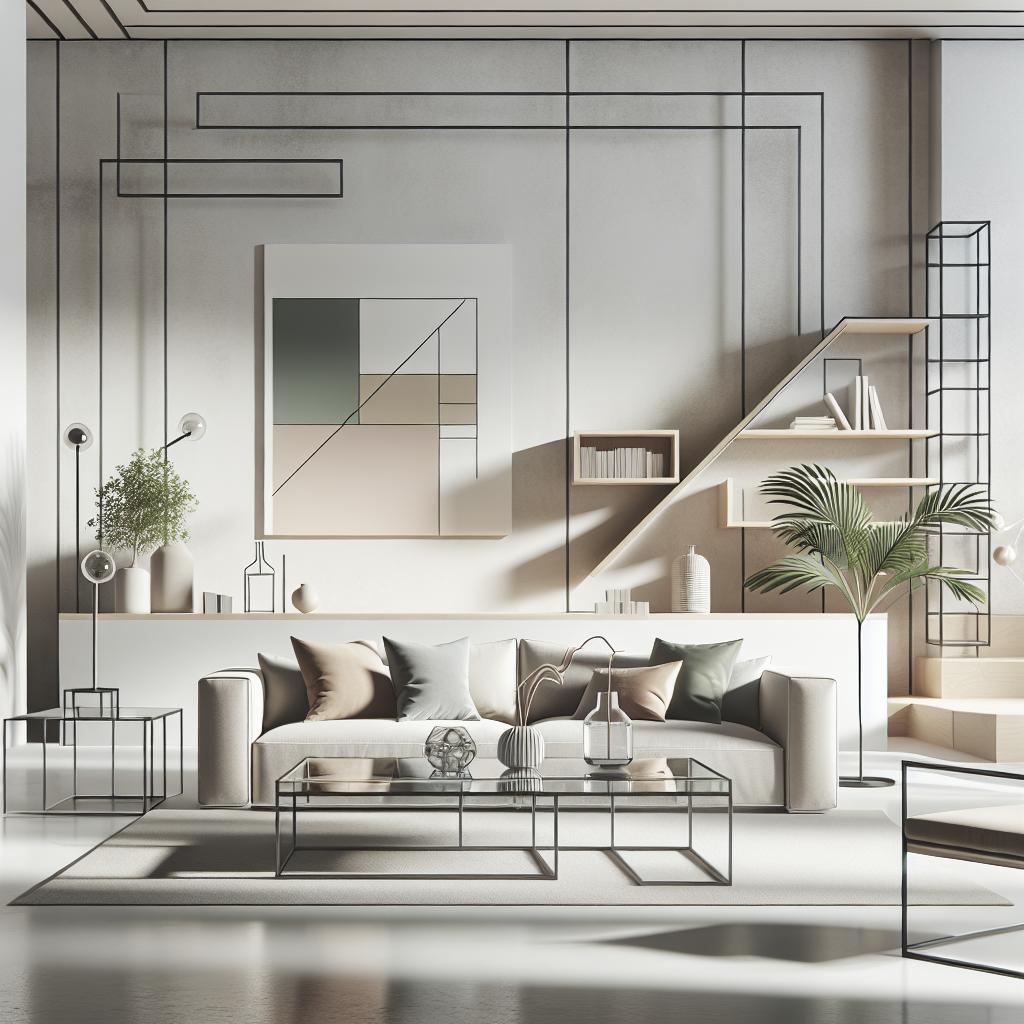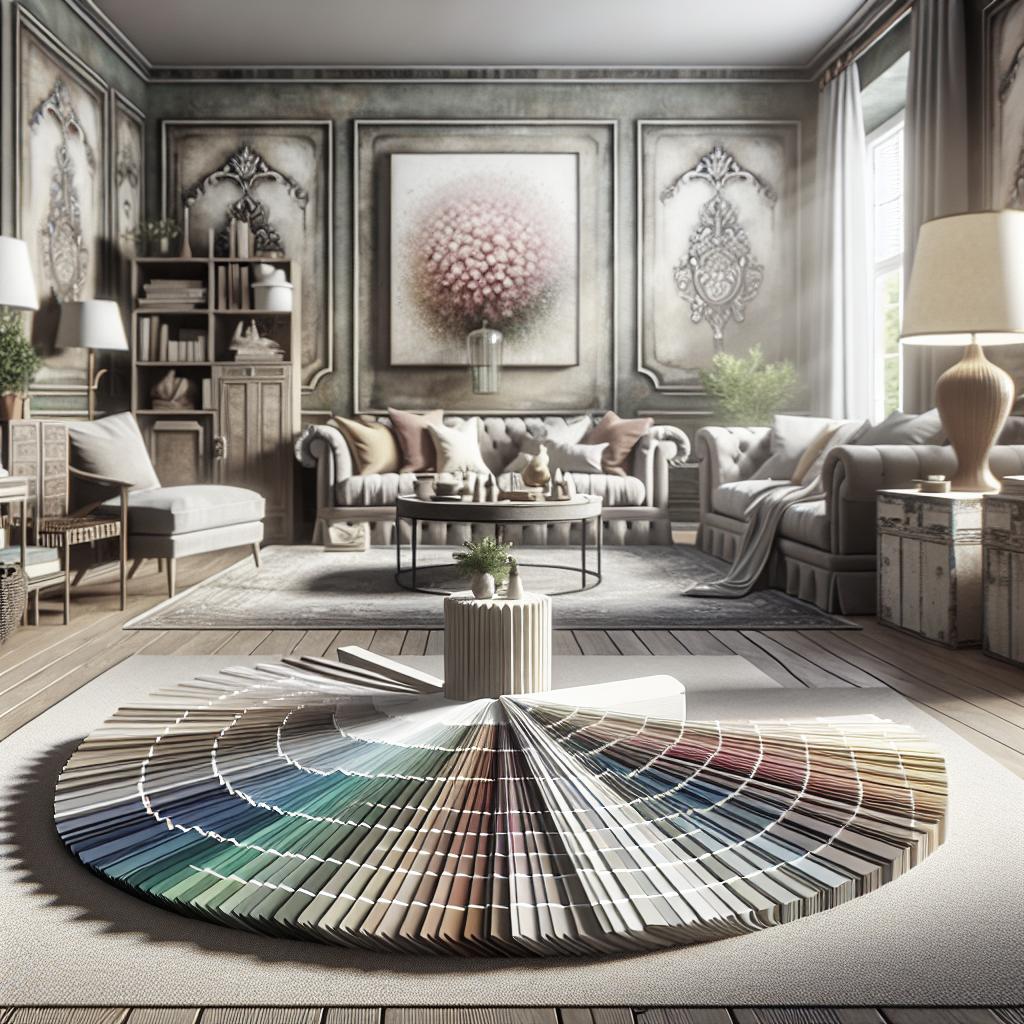### The Emergence of Transformative Architectural Trends in 2024 As we delve deeper into 2024, the architectural landscape continues to evolve, driven by a confluence of sustainability, technology, and a deepening appreciation for the heritage of existing structures. The latest architectural trends focus not only on creating visually stunning edifices but also on promoting eco-conscious living and enhancing human well-being. From the adoption of sustainable and eco-friendly designs to the innovative reuse of existing buildings, the architectural world is undergoing a significant transformation. Smart, responsive technologies are making buildings intuitive and adaptive, while the biophilic design ensures that green spaces and natural elements are integral parts of urban life. These trends are not merely ephemeral; they hold the potential to redefine how we shape our living environments. In this article, we will explore these transformative trends and discuss how you might incorporate them into your design projects for the future. ### Sustainable and Eco-friendly Designs #### Integration of Eco-friendly Materials One of the driving forces behind modern architecture is the integration of eco-friendly materials. These materials, such as bamboo, reclaimed wood, and recycled metal, help reduce environmental impact without compromising structural integrity. Architects are now prioritizing the use of locally sourced materials, minimizing the carbon footprint associated with transportation. Furthermore, advances in technology have led to the creation of new, sustainable building materials, such as carbon-positive concrete and self-healing bioplastics, which are slowly being incorporated into new projects. The trend towards eco-friendly materials is not just about using greener products but also about ensuring durability and resilience. For example, solar tiles and green roofs serve dual purposes: absorbing sunlight for energy and providing insulation. As more architects embrace sustainable materials, they are redefining what it means to build both sustainably and beautifully, paving the way for environmentally harmonious urban landscapes. #### Implementation of Energy-efficient Technologies The next wave of architectural innovation involves the widespread implementation of energy-efficient technologies. These technologies include solar panels, geothermal heating systems, and advanced insulation techniques that collectively reduce a building’s energy consumption. Architects and designers are increasingly focusing on zero-energy buildings that produce as much energy as they consume, contributing to sustainability and reducing utility costs. Innovative lighting systems, like intelligent LED fixtures with motion sensors, minimize energy usage while enhancing ambiance. Smart glass, which can adapt its opacity to mitigate heat gain, exemplifies the convergence of technology and design. As these technologies continue to evolve, architects are empowered to create spaces that are both functional and sustainable, highlighting the importance of energy efficiency in modern construction. #### Embracing Green Building Practices Green building practices have become a cornerstone of contemporary architecture, with an emphasis on creating homes and structures that are environmentally responsible and resource-efficient. This approach encompasses the entire building life cycle, from siting, throughout design, construction, operation, maintenance, renovation, and eventually, deconstruction. The focus is on reducing waste, allowing for more efficient water use, and maximizing natural lighting. The green building movement has gained traction with the rise of certifications such as LEED (Leadership in Energy and Environmental Design), which sets standards for energy efficiency and environmental impact. These certifications provide architects and builders with a framework for the best practices in sustainable design, encouraging the integration of these methods in various sectors, from residential to commercial construction. #### Examples of Sustainable Architectural Projects Across the globe, various architectural projects exemplify the principles of sustainable and eco-friendly design. The Bosch Siemens Hausgerät Headquarters in Munich stands out as a beacon of sustainability, incorporating elements such as energy-efficient modular furniture and solar panels integrated into every aspect of the building. Similarly, the Crystal in London, one of the world’s most sustainable buildings, leverages cutting-edge technology to generate renewable energy while preserving water resources. In Melbourne, Australia, the Pixel Building sets a remarkable precedent with its carbon-neutral design. The building features a striking facade that facilitates natural ventilation and a rooftop that collects rainwater for internal use. These examples inspire architects worldwide to adopt and innovate sustainable practices, showcasing the transformative potential of eco-friendly architecture. ### Adaptive Reuse and Renovation #### Emphasizing the Importance of Adaptive Reuse In an age where sustainability is paramount, adaptive reuse has emerged as a critical method for reducing environmental impact and preserving cultural heritage. This practice involves repurposing existing structures for new uses, extending their lifespan, and minimizing the need for new construction. Architecturally, adaptive reuse allows for creativity and innovation, as designers find ways to integrate modern functions within century-old walls. The importance of adaptive reuse extends beyond environmental considerations. It also encourages a deeper connection to the historical and cultural context of buildings, enriching our understanding of the spaces we inhabit. By breathing new life into old structures, architects can preserve the unique narratives that these buildings embody, ensuring that they remain relevant and appreciated by future generations. #### Repurposing Existing Structures for Sustainability Repurposing existing structures is rapidly becoming a popular solution to the challenges of sustainability and urban density. Adaptive reuse projects often face fewer regulatory hurdles, as they make use of established infrastructure, which conserves resources that would otherwise be consumed in new construction. The reuse of existing materials and spaces reduces both demolition waste and the carbon footprint, crucially aiding sustainability efforts. This process requires innovation and sensitivity, balancing historic preservation with contemporary design needs. For example, old industrial warehouses have been transformed into trendy loft apartments and vibrant cultural centers, blending history with modernity. These projects highlight how repurposing structures can result in dynamic and sustainable environments that honor both the past and future. #### Preserving Cultural and Historical Significance Preservation is at the heart of adaptive reuse, as these projects prioritize maintaining the cultural and historical significance of existing buildings. Adaptive reuse projects often highlight the architectural features that define a building’s historical character while updating interior spaces to accommodate contemporary functionality. This approach ensures the longevity and continued relevance of historical structures in rapidly urbanizing cities. Emphasizing the cultural significance of architecture extends beyond restoring individual buildings. Cities worldwide are increasingly recognizing the value of heritage districts, promoting policies that encourage preservation alongside development. These initiatives not only protect historical landmarks but also preserve the cultural fabric of communities, providing inhabitants with a sense of continuity and identity. #### Notable Examples of Successful Adaptive Reuse Projects Several iconic projects exemplify successful adaptive reuse. The Tate Modern in London, a former power station transformed into a world-renowned art museum, deftly blends industrial architecture with sleek modern design. Similarly, the High Line in New York City, once an elevated railway, is now a major public park, bringing greenery and vitality to the urban environment while preserving a piece of the city’s history. Another shining example is the Zeitz Museum of Contemporary Art Africa in Cape Town, which repurposes a historic grain silo complex into a cultural landmark with innovative design features. These projects demonstrate the limitless possibilities of adaptive reuse, where architectural ingenuity breathes life into yesteryear’s structures, fostering sustainability and continued cultural appreciation. ### Smart and Responsive Architecture #### Integration of Smart Technologies in Design With advancements in technology, smart architecture is transforming how we interact with our built environment. The integration of smart technologies into building design is revolutionizing everything from energy management to security systems. These technologies allow buildings to be more intuitive and responsive, adapting to the needs and preferences of their occupants. Smart technologies facilitate automation and connectivity, enabling seamless control over lighting, heating, security, and entertainment systems. IoT (Internet of Things) devices and sensors can optimize energy usage and enhance convenience, creating a personalized living experience. As architects delve deeper into the potential of smart architecture, buildings are no longer static entities but dynamic entities that enhance the quality of life. #### Responsive Buildings Adapting to Environmental Conditions Responsive architecture is making waves as buildings become increasingly adaptive to changing environmental conditions. Responsive buildings can modify their shape or function in response to climatic variations, optimizing energy efficiency and occupant comfort. This concept involves adaptive facades that adjust to sun exposure, dynamic shading systems, and ventilation systems that respond to air quality metrics. Such architectural designs reduce reliance on mechanical systems by harnessing natural light and temperature fluctuations. Responsive architecture also provides architects with opportunities to incorporate elements such as kinetic facades and smart glass, ensuring that buildings remain adaptive and efficient in the face of climate challenges. By embracing these adaptations, architects can create more sustainable and resilient structures to meet future demands. #### Utilization of Automated Climate Control and Security Systems Automated systems have become indispensable in the modern architectural landscape, with a focus on climate control and security. Smart HVAC (Heating, Ventilation, and Air Conditioning) systems use sensors and algorithms to dynamically adjust indoor climate conditions, maximizing comfort while minimizing energy consumption. Additionally, automated shading and lighting further enhance energy conservation efforts. Security systems have also seen significant advancements, incorporating facial recognition, biometric access controls, and AI-based surveillance analysis to keep buildings safe and secure. These technologies not only ensure the security of the building’s inhabitants but also contribute to greater operational efficiency. By adopting these automated solutions, architects and designers can prioritize both energy efficiency and safety in their projects. #### Examples Showcasing the Marriage of Technology and Architecture Several remarkable projects exemplify the fusion of technology and architecture, creating environments that are both functional and sustainable. The Edge in Amsterdam, renowned as one of the smartest and greenest buildings in the world, exemplifies this blend with its intelligent working environment. From personalized climate control to adaptive lighting, the Edge is a benchmark for how technology can enhance sustainability. In Asia, the Al Bahar Towers in Abu Dhabi incorporate a dynamic shading system that responds to the sun’s movement, reducing heat gain and minimizing energy consumption. These innovative projects highlight the extraordinary potential of integrating smart technologies into architectural design, paving the way for more responsive and intelligent built environments. ### Biophilic Design #### Definition and Significance of Biophilic Design Biophilic design is an emerging architectural principle that seeks to integrate natural elements into the built environment. Rooted in the belief that humans have an innate connection to nature, this approach brings elements such as natural light, greenery, and natural materials into urban spaces. The significance of biophilic design lies in its potential to enhance well-being, reduce stress, and improve overall quality of life for occupants. By prioritizing natural systems and processes, architects can blur the lines between outdoor and indoor spaces, creating a harmonious balance between the two. Biophilic design encourages the inclusion of green rooftops, living walls, and extensive use of natural materials, promoting a sense of tranquility and connection to nature in urban dwellings. #### Incorporation of Nature Into the Built Environment Integrating nature into the built environment is central to biophilic design. This trend emphasizes the incorporation of elements such as green roofs, vertical gardens, and indoor plant installations that enhance the aesthetic appeal of spaces while improving air quality. Natural materials like stone, wood, and water features further enhance this connection, bringing a sense of the outdoors inside. Architects are increasingly designing open floor plans with large windows that promote natural light and afford views of surrounding landscapes. These designs encourage a symbiotic relationship between architecture and nature, fostering an environment where occupants feel more in tune with the natural world. As urban areas continue to expand, biophilic design addresses the need for nature, making it accessible to city dwellers. #### Benefits of Biophilic Design for Well-being Biophilic design goes beyond aesthetic appeal; its impact on our well-being is profound. Research has shown that incorporating natural elements into architectural design can lead to reduced stress levels, enhanced mood, and increased productivity. Biophilic environments promote relaxation and cognitive function, making them ideal for workspaces and residential areas alike. Moreover, access to green spaces has been linked to improved physical health, with increased opportunities for exercise and social interaction. These benefits underscore the importance of biophilic design in creating healthy, sustainable living environments that prioritize occupant well-being. As architects embrace these principles, they redefine how built environments can support and enrich our lives. #### Notable Architectural Projects Embracing Biophilic Principles Several architectural projects stand out as exemplars of biophilic design. Singapore’s Jewel Changi Airport seamlessly integrates nature and architecture, featuring the world’s tallest indoor waterfall and a sprawling rainforest canopy. This innovative design not only mesmerizes visitors but also provides relaxation and rejuvenation amid travel stress. The Bosco Verticale in Milan is another notable project, consisting of residential towers adorned with hundreds of trees and plants on each balcony. The greenery acts as a natural insulation and air filtration system, bringing the benefits of biophilic design to urban living. These projects illustrate the power of biophilic design in transforming buildings into vibrant ecosystems that foster well-being and sustainability. ### How Will You Incorporate These 2024 Architectural Trends in Your Design? As the architecture world propels forward into 2024, these transformative trends offer numerous opportunities for innovation and improvement. Whether you are developing new projects or updating existing structures, integrating these trends can enhance both functionality and sustainability in your designs. By prioritizing sustainable materials and energy-efficient technologies, you can create buildings that are environmentally responsible and cost-effective in the long run. Adaptive reuse ensures that you are building with the future in mind, preserving cultural significance while meeting modern needs. Incorporating smart and responsive technologies can elevate user experience, making buildings more intuitive and adaptive to occupant preferences. Biophilic design, too, should be a priority, as it not only enhances aesthetic appeal but also improves well-being. By embracing these trends, architects and designers will shape a built environment that is sustainable, innovative, and aligned with the evolving demands of our world.
| Architectural Trend | Key Focus Areas | Notable Examples |
|---|---|---|
| Sustainable and Eco-friendly Designs | Eco-friendly Materials, Energy-efficient Technologies, Green Building Practices | Pixel Building, The Crystal |
| Adaptive Reuse and Renovation | Importance, Repurposing Structures, Cultural Preservation | Tate Modern, High Line |
| Smart and Responsive Architecture | Smart Technologies, Responsive Buildings, Automated Systems | The Edge, Al Bahar Towers |
| Biophilic Design | Nature Integration, Well-being Benefits | Jewel Changi Airport, Bosco Verticale |


